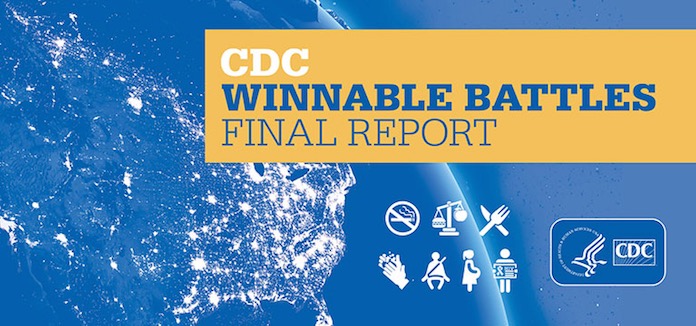The Centers for Disease Control and Prevention (CDC) has released the final report on the Winnable Battles program, which is an effort to make the biggest health impact for the most Americans in the shortest time. The program tackled seven threats to public health where they believed they could make an immediate impact: Tobacco; Nutrition, Physical Activity and Obesity; Food Safety; Healthcare-Associated Infections; Motor Vehicle Safety; Teen Pregnancy; and HIV. The project was launched in 2010.

Progress on some of these fronts were significant. But the battle against food poisoning yielded mixed results.
In food safety, illnesses caused by some pathogens decreased significantly, while others have kept increasing. Every year, 1 in 6 Americans gets sick by eating contaminated food or drinking contaminated beverages. The medical and industry costs of those illnesses is more than $15 billion every year.
Of those illnesses, Salmonella infections results in more hospitalizations and deaths than any other bacteria in food and results in about $365 million in direct medical costs every year. Unfortunately, the number of Salmonella illnesses has increased. The target set by the CDC was 13 cases per 100,000. But there are about 16 to 17 cases per 100,000 population in 2015.
CDC Director Dr. Tom Frieden said in a statement, “The Winnable Battles approach is all about accountability, setting ambitious goals, working with a broad group of partners, and holding ourselves to the high standard of rapid health improvement. The past six years show that with focus and commitment, we can win battles against the most important health problems Americans face every day. Although there is much more to be done, because of the great work of CDC doctors, scientists, and public health specialists, and our partners at the federal, state and local levels, in hospitals and health care systems, and in the community, Americans are living longer, healthier lives and avoiding expensive and painful diseases.”
But there was progress made against other pathogens. Rates of illness from E. coli bacteria did drop, but didn’t reach the goal of a 29% reduction. And since the CDC adopted whole genome sequencing for Listeria monocytogenes outbreaks, the median number of Listeria illnesses per outbreak has declined by 50%.
More than half of all foodborne illness outbreaks are associated with banquet halls, restaurants, schools, and other institutions. Data collected through the National Environmental Assessment Reporting System will be used to help determine the causes of outbreaks in those facilities, improve the government response, and help prevent future outbreaks. In 2014, the underlying environmental factors were identified for 56% of closed outbreaks.
An analysis found that PulseNet, the national lab that detects foodborne illness outbreaks prevents an estimated 270,000 illnesses every year from Salmonella, E. coli O157 and Listeria monocytogenes. That results in a savings of $507 million in medical costs and lost productivity. In addition, PulseNet speeds up identification and recalls of contaminated foods.




